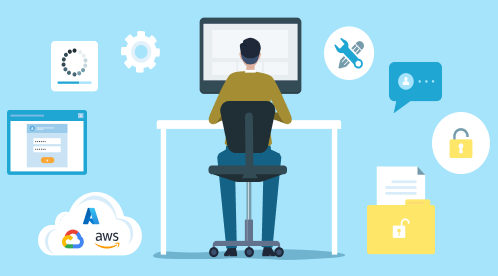
You’re in the middle of a major project, and your security auditor sends an email with a seemingly simple request: “Please provide a complete and up-to-date inventory of all your internet-facing assets.”
How confident are you to provide an accurate response? You know your official asset list is outdated. What about the new server spun up by the DevOps team last month? Or the forgotten subdomain from a marketing campaign two years ago? The auditor’s request isn’t about being difficult; it’s about a fundamental truth of modern security: you can’t protect what you don’t know you have.
This is where the concept of an attack surface comes in. Your attack surface is the sum of all the different points where an unauthorized user could try to enter or extract data from your environment. Think of it as your organization’s digital footprint. It includes everything from your known assets to the forgotten, unmonitored ones—the shadow IT that keeps security teams up at night.
Why is a complete asset inventory so hard to maintain?
In today’s dynamic cloud environments, assets are created and retired faster than ever before. A traditional, static asset inventory is no longer enough. The challenge isn’t just about having a list; it’s about having a live, continuously updated view of what’s exposed.
- Human Error: Assets are often forgotten or not properly documented when they’re created.
- Shadow IT: Teams deploy new services, cloud instances, or subdomains without involving the security department.
- Mergers and Acquisitions: When you acquire a new company, you also acquire their entire, often undocumented, digital footprint.
- Legacy Systems: Old, unmonitored systems can be left running, creating hidden entry points for attackers.
The solution isn’t more spreadsheets… It’s continuous monitoring.
Trying to manually maintain an accurate asset inventory is like trying to catch smoke with your bare hands. It’s an impossible, frustrating, and ultimately ineffective task. The solution is to automate the discovery process with a purpose-built tool.
Our Attack Surface Monitoring product continuously scans and monitors your organization’s digital footprint from an external, attacker-centric perspective. It provides a real-time, comprehensive view of all your internet-facing assets, including:
- IP addresses and domains
- Subdomains and hostnames
- Cloud assets (e.g., AWS S3 buckets, Azure Blobs)
- Exposed services and open ports
- Active web applications and their associated technologies
With an Attack Surface Monitoring solution, you get a single source of truth that is always up-to-date. Instead of reacting to an auditor’s request with panic, you can respond with confidence and a complete, accurate report.
Be proactive, not reactive.
Don’t wait for the next audit or, worse, a security breach to discover what you’re missing. By understanding and continuously monitoring your attack surface, you can proactively find and secure vulnerabilities before attackers do.
Attack Surface Monitoring is one of the most helpful tools in your cybersecurity reporting arsenal.
Need help with your Attack Surface?

For assistance with the details surrounding your particular attack surface, speak with one of our cybersecurity experts to learn more about how Attack Surface Monitoring could help you.